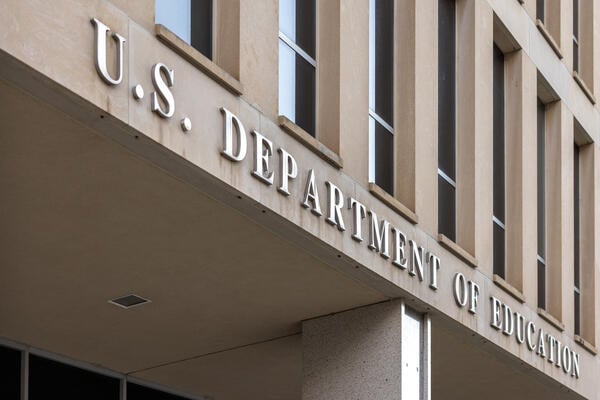
The Ed Department Hasn’t Even Begun to Fight (opinion)
Despite high-profile federal actions against universities like Columbia University; the University of California, Los Angeles; and others over the past few months, many higher ed watchers, including me, have been waiting for the other shoe to drop. While civil rights investigations, demands for massive settlements, cuts to grant funding and threats to institutional accreditation have led to real-world consequences, no institution has lost access to federal student loans.
But—as Friday’s announcement that Harvard University had been placed on heightened cash monitoring status shows—that could change quickly. And regulatory actions by the previous administration increase the likelihood of the Trump administration’s success if they choose to flex the powers provided to them.
Without much outside attention at the time, the Biden administration developed powerful tools for the U.S. Department of Education to use against colleges. But, despite Friday’s action against Harvard, this oversight muscle has not—yet—been employed by Secretary Linda McMahon. Given an antagonistic Trump administration, colleges should be aware of possible future action and prepare for federal enforcement under this enhanced authority.
As those who work in federal compliance know, the regulations governing student loans are a tangled mess, one that has forcefully shifted every four years with the changing of presidential administrations. Biden and Secretary of Education Miguel Cardona put their regulatory agenda into overdrive, creating expanded oversight not contemplated by past administrations.
Normally, that would mean a Trump department would pull back the reins, but that is not the pattern so far. While some of the Biden-era rules are being challenged by private litigants, the Trump administration has, unexpectedly, chosen to defend others, like the 2023 gainful-employment rule. The One Big Beautiful Bill Act, a major driver of the second Trump-era higher education regulatory policy, actually builds on Biden-era policies.
Biden’s regulatory changes were significant. For example, the regulations expanded the department’s interpretation of standards around an institution’s administrative capability to participate in the federal student loan program. If not satisfied to the department’s liking, these regulations grant the agency the power to kick colleges out of the loan program or make continued participation financially impossible.
The department also has the power to conduct an invasive review of an institution’s administrative capability if it determines that the college was subject to a “significant negative action” by another federal or state agency. Notably, the Biden administration did not provide a meaningful definition of what constitutes a “significant negative action.” Arguably, even the pulling of a single federal grant, for any reason, would satisfy this provision.
It is hard to say how the Trump administration will interpret this and other similar regulations. But with federal agencies ending grants left and right—and with a multifront assault on higher ed from D.C.—it is easy to imagine McMahon embracing the power that the previous administration provided to subject institutions to massive penalties or the loss of student loan eligibility.
And this is just the beginning. Other changes to institutional financial standards create more ways for McMahon to turn the screws. This includes a minimum requirement of a 10 percent letter of credit—that is, a demand that colleges convince a private lender to back 10 percent of the total amount of federal student aid funds received by the institution each year—if the department merely suspects certain violations. Additional violations compound the required amounts, and there is no cap on what the agency can demand.
While some colleges may be able to weather this fiscal hit, the vast majority would not. As a result, the Education Department can effectively destroy a college by making it impossible to find enough backup funding to survive.
Add to this tool kit long-standing regulations on institutional misrepresentations, and the second Trump administration has a plethora of options to remove eligibility for student loans when and if it chooses to.
Why did the Biden administration create such a powerful set of tools? Their target was for-profit colleges, and they hardly expected that their regulatory overreach would land in the hands of a second Trump administration that would come out swinging against traditional public and private institutions.
True, these rules may be legally vulnerable, but any college’s fight will be costly and would not stop the department from threatening or pre-emptively cutting off an institution’s student loan funds.
So, what can colleges do about this?
For investigations based upon past events, institutions should prepare protocols for responding to government inquiries and strengthen their records-retention processes and procurement procedures. Clear workflow—along with active communication with in-house or outside legal counsel—can help smooth out some rough edges when the Education Department comes knocking. Institutions should also be aware that any issues that could lead to department attention based upon the new regulations could be uncovered in an annual audit.
To insulate a college from future actions, reviewing internal compliance standards and procedures in light of these new regulations, as well as updating staff training, can help avoid some painful headaches.
Over the past decade, the department has successfully closed colleges down based upon far weaker versions of the current regulations. Today, colleges that get crosswise with the Trump administration should prepare for an assault on their student loan eligibility, because it may be coming.
Source link


